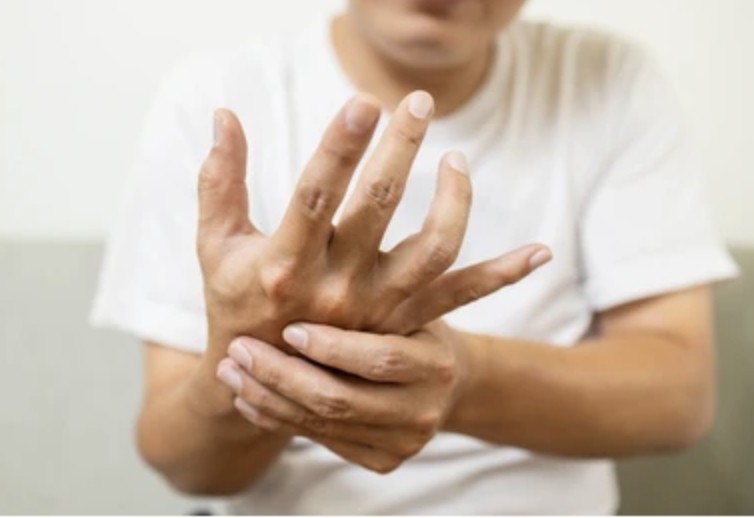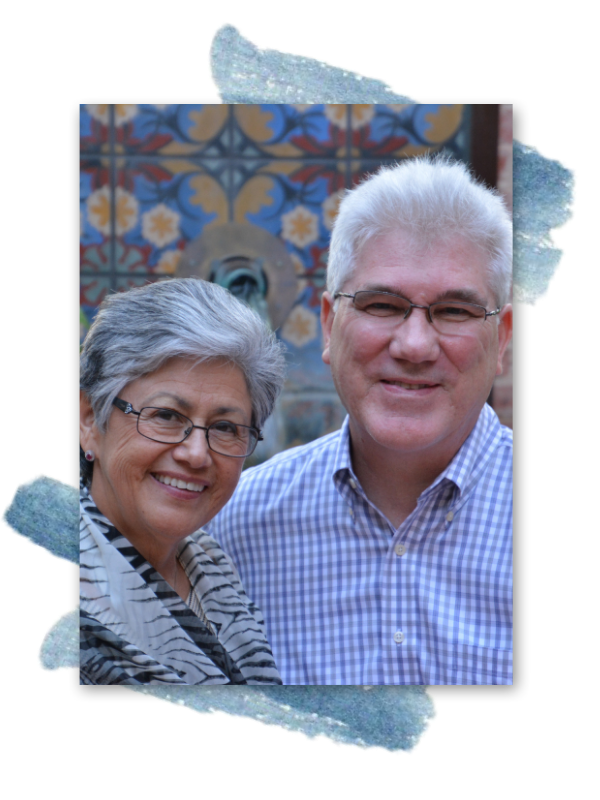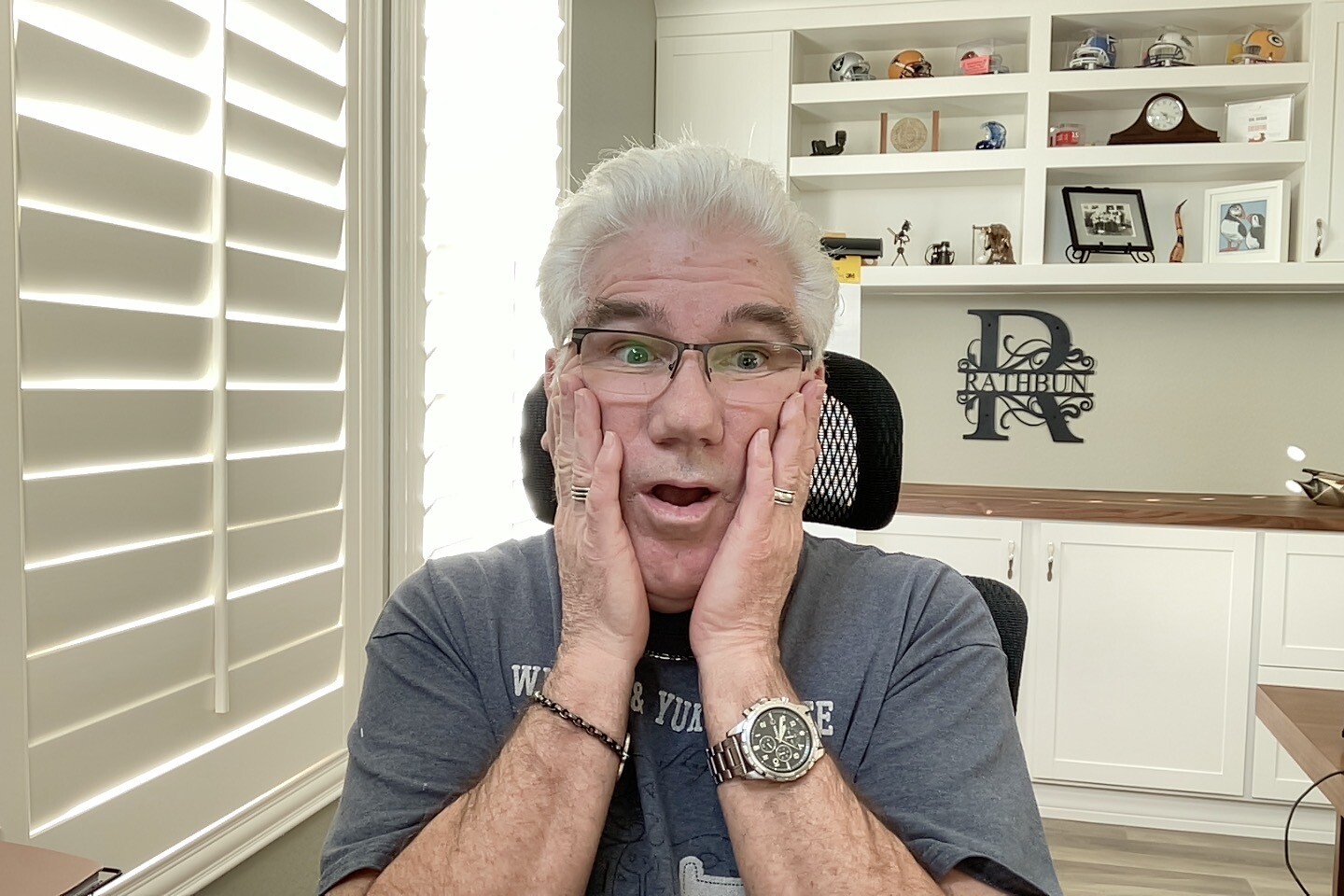
I admit I already have gray hair, but I always wondered why I started graying in my 20s.
Ok, I know this topic is for maybe older people that have graying hair, but did you ever wonder WHY hair starts to gray? I found this article from Epoch times and was curious about what the scientists found.
Now you know that graying hair cannot be stopped, but at least we can use essential oils to enhance your hair's appearance and stamina. I’ll try to keep this information understandable and in plain English, but I might fail a little!
An Embarrassing Story
When I was getting my haircut at a mainstream establishment, the stylist told me that my hair needed some help. WHAT? My hair has been gray for over 40 years, so I was shocked. I thought she would tell me that my hair had grown too long, and she needed to cut it…. but needed help? You should have seen my reaction!
The stylist looked at my hair and told me that my gray hair was turning white. I always thought that “silver” was more appropriate, but white? I knew that my graying hair would look horrible being white.
So, I asked for recommendations from the stylist, and to my surprise, she suggested that I use Young Living lavender oils. So just like a doctor, I followed her instructions! I started using the Young Living oils immediately and saw great results. My hair was much darker and fuller….and silver!
I used the oils for three months, and I noticed a big difference in my hair. Now I know what to do!
Read on if interested in what you can do to help
enhance your hair with essential oil products!
How it Happens
Gray hair is a rite of passage that happens to virtually everyone by the age of 50 (and usually starts much sooner). Despite its commonality, why hair grays have remained much of a mystery, until now.
- An international team of researchers has discovered the first gene linked to gray hair
- The gene has previously been linked to blonde hair in Europeans and is now connected to gray hair as well
- The gene accounted for about 30 percent of hair graying among study participants
Once you reach the age of 30, you have a 10 percent to 20 percent chance of graying hair with each passing decade.1 It’s a fact of life that, eventually, virtually everyone will go gray.
Your hair color comes from a pigment called melanin. Each hair may contain dark melanin (eumelanin) and light melanin (pheomelanin), which blend to form the many shades of hair color among humans. When you’re young, special pigment stem cells called melanocytes inject pigment into keratin-containing cells.
This keratin, a protein, makes up your hair and is responsible for giving it its color.
As you age, melanin is reduced, which is why your hair turns gray and, ultimately, white (this means there’s no melanin left).
Hmmm. That means I have no melanin left in my noggin! Darn!
Does Your Hair Have Its Own ‘Biological Clock?
According to Desmond Tobin, Ph.D., professor of Cell Biology from the University of Bradford in England, your hair follicles may be regulated by a “melanogenic clock” that eventually slows down the activity of melanocyte cells. Further, according to the Library of Congress:
“… Tobin suggests that hair turns gray because of age and genetics, in that genes regulate the exhaustion of the pigmentary potential of each individual hair follicle. This occurs at different rates in different hair follicles. For some people, it occurs rapidly, while in others it occurs slowly over several decades.”
It’s known, for instance, that white people may start going gray in their mid-30s, while Asians typically go gray beginning in their late 30s. African Americans typically don’t go gray until their mid-40s.
What Else Causes Gray Hair?
Other factors for why hair turns gray include:
•Hydrogen peroxide — Hydrogen peroxide is a well-known tool for bleaching your hair, but many people aren’t aware that your hair cells make hydrogen peroxide, too. As you age, the amount produced increases, which researchers believe ultimately bleaches out your hair pigment, turning your hair grey and then white.
•Smoking — There is a significant association between tobacco use and graying of hair. Cigarette smoking is also linked to premature hair graying, with the onset of gray hair occurring before the age of 30.
•Oxidative stress — Oxidative stress can be defined as the state in which your free radicals (from pollution, poor diet, stress) outnumber your antioxidant defenses (from a healthy diet). Graying hair may be an indicator of oxidative stress-induced damage. Research has also shown that people with premature graying had a higher level of pro-oxidants and lower levels of antioxidants than those with normal hair.
•Vitamin B12 deficiency — This is also linked to premature gray hair, and there is at least one report of pigmentation returning to hair after the vitamin deficiency was resolved.
So, the moral of this section is don’t smoke or bleach
your hair if you don’t want to gray early!
Does Stress Cause Gray Hair?
It’s commonly believed that stress causes gray hairs (and many parents of teenagers or former presidents, whose hair often turns gray during office would likely attest to that). Science on this topic has frequently come up short, save a 2011 study published in the journal Nature and led by Nobel Prize winner Dr. Robert Lefkowitz.
That study found chronic stress and frequent activation of the “fight or flight” stress response leads to DNA damage that may promote not only aging, cancer, neuropsychiatric conditions, and miscarriages but also affect genes that control hair pigment.
The search for a cure for gray hair assumes that gray hair is a problem that needs solving. Nothing intrinsically bad about having gray hair. In fact, from a health perspective, you’re far better off going gray than using toxic hair dyes.
And if you’re thinking of embracing your silver locks, now’s a perfect time. So-called “granny hair” is the latest trend, with people paying salons big bucks to go gray. If you’re lucky enough to have earned your gray naturally, you can get this look for free. New York hair stylist Jan-Marie Arteca told Reuters
“Granny hair is basically silver hair, any tone of grey in your hair: steel grey, silvery grey, really, really white, platinum-ish with either violet or silver undertones … That’s the trend.”
OK, now we know why, let’s see what we can do to our graying hair!
Essential Oils for Gray Hair & How to Use Them!
Our hair has been a fascinating part that was never out of consideration in terms of beauty. For many people, hair is one of the main components of beauty. However, many face and struggle with the problem of grey hair. Be it because of age or any other health issue, most of us want to get rid of grey hair which is possible with the application of specific essential oils.
For hair, essential oils work wonders to solve dandruff problems, hair loss/ fall, promote hair growth & thickness, and what? Are we missing something? Yes – we are missing one of the widespread issues people experience nowadays – Noticing Gray Hair/ or the early onset of grey hair. Noticing Gray hair has become one of the general concerns of men and women – both.
Used oils, hair serums, conditioners, and expensive products too? Uggghhh... Frustrated? When so many options, why not essential oils yet? It’s time to go with the essential oils! Essential oils won’t ever break your hope and heart too. It’s safe if topically applied on skin, hair, and diffusers.
Here are several essential oils that are known to be beneficial for gray hair. They contain antioxidants and can help hair grow faster and stronger, as well as prevent hair loss. Essential oils can be incorporated into your daily skincare routine, but they can also be used to nourish grey hair externally.
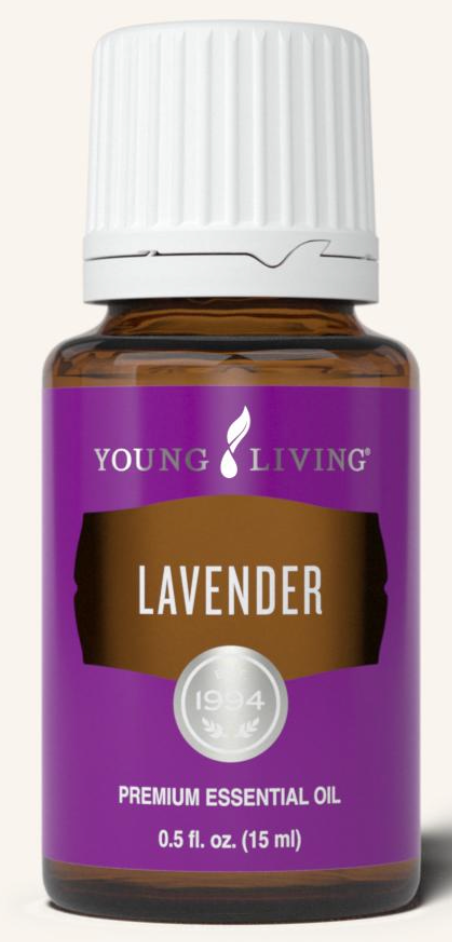
1. Lavender Oil
This is one of the best oils that combat gray hair. It replenishes hair follicles with the proper nutrients, vitamins, and proteins.
It also has anti-inflammatory properties that help reduce swelling and inflammation.
This oil is also great for sensitive or damaged scalps; it can prevent scalp acne and hair loss by nourishing your scalp and promoting healthy hair growth.
For the best result, you can add a few drops of Lavender oil to a carrier oil and massage it into your scalp before going to bed. Let the oil soak in overnight. Do this for two or three weeks to see results.
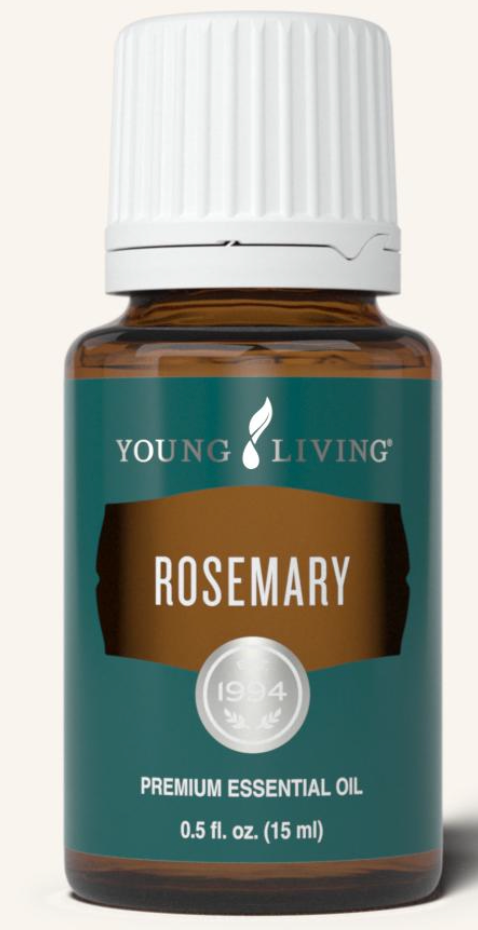
2. Rosemary Oil
Rosemary oil has similar properties to lavender oil. In the market, you can find many hair care products containing rosemary oil. You can use it for oil massages to your scalp to promote hair growth.
To use rosemary oil as a treatment for gray hair, heat a few drops of it in coconut oil for a few minutes and add a few drops of almond oil or olive oil. Massage the mixture on your scalp and leave it on for 30 minutes. Rinse your hair with shampoo and conditioner
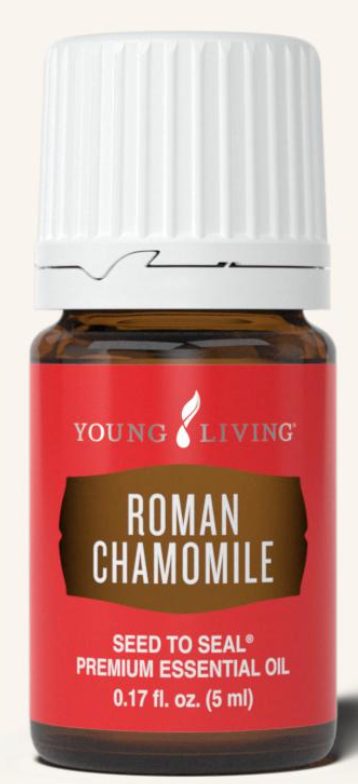
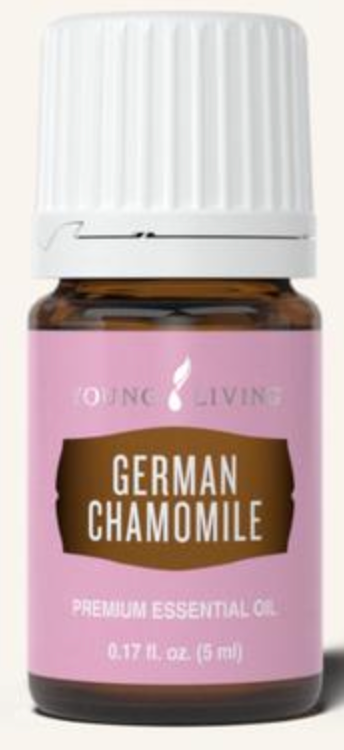
3. Chamomile Oil
Chamomile tea is good for relieving inflammation and stimulating hair growth. You can make chamomile tea by pouring boiling water over dried chamomile flowers. Let the tea cool and then strain it before adding a few drops of olive oil or coconut oil. Massage the mixture into your scalp and leave it on for 30 minutes. Rinse your hair with shampoo and conditioner.
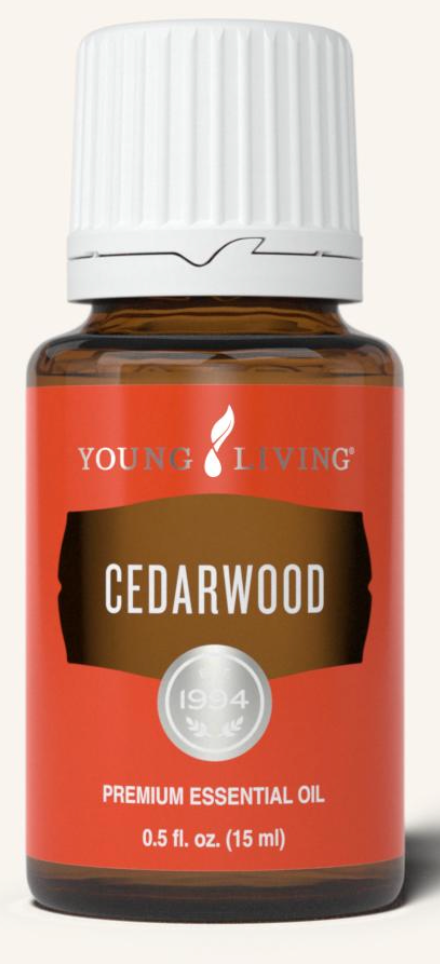
4. Cedarwood Oil
Cedarwood is known for its ability to control the oil-producing glands on your scalp. It is known for its antifungal and antibacterial properties; Cedarwood oil can be a great solution to your hair problems.
Additionally, it helps enhance hair growth and sheen and promotes the good health of your hair.
How to use: For its application, you need a carrier oil for dilution (Young Living V-6 oil, etc.). You can apply it to your scalp, massage it and then, after about 10 minutes, wash your hair with your regular shampoo.

5. Clary Sage
Clary Sage is yet another essential oil useful in preventing the premature greying of hair. It does so by slowing down the pace at which the hair follicles age. It enhances the hair's color and shine and promotes the thriving circulation of blood in your scalp. Therefore, making your hair healthy and glossy.
How to use: You must mix three drops of it in your regular conditioner or one tablespoonful of it in your carrier oil. Gently massage your scalp, sleep well using the head mask (if you want), and wash your hair the following day.
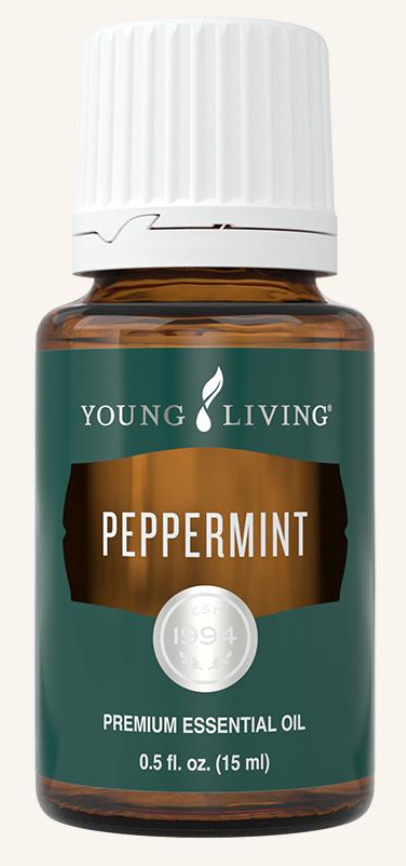
6. Peppermint
Peppermint helps promote hair growth, and it is essential for the issue of grey hair as it helps in the growth of newer and darker hair and thus, eradicating grey hairs. It enhances and guards the melanin production in the hair follicles, which is beneficial for getting natural dark hair.
How to use: For application, put a few drops of it in your carrier oil, retain it on your scalp for a few minutes, and then wash your hair. One can sleep with a relaxing head massage before going to bed and wash hair the following day. Along with the shiny appearance, the hair will look healthy and lustrous too.
Another way is to add the oils to your shampoo or conditioner, but if you want the best of both worlds, you can!
What Are the Types Of Hair That Respond Better To Essential Oils?
Pure, virgin hair from any ethnicity will generally respond to essential oils. This applies to hair that has recently been colored, too. If you have naturally thicker, coarser hair, you may need to experience more trial and error before finding the right essential oils for your hair type.
Can You Prevent Grey Hair with Natural Substances?
The short answer is: No.
There is no known way to stop grey hair from occurring, though various essential oils may slow down the process. The components of natural substances that are made up of atoms of carbon, hydrogen, and oxygen are the building blocks of all life. These same atoms are the building blocks of human hair, and when enough of the molecules have been removed from the hair, the hair will naturally begin to gray.
How To Preserve Your Gray Hair?
The best thing you can do to preserve your gray hair is to keep it well-conditioned. This means using hair care products with the best ingredients available today.
Recommended Shampoos and Conditioners
Keeping your hair well-conditioned depends on the type of shampoos & conditioners you use! If your current shampoo & conditioner contain any synthetic ingredients or fragrances, then you may want to avoid them. Young Living’s line of shampoos and conditioners do not contain any synthetic ingredients and in fact, DO contain essential oils that will do wonders for your hair….even if it is gray!
For example:


- Lavender Mint Clarifying Shampoo lifts away product residue, excess oil, and built-up pollutants, leaving hair feeling completely clean, refreshed, and full of soft body and bounce.
- Lavender Mint Clarifying Conditioner provides nourishing moisture to the hair and scalp leaving your hair feeling refreshed and full of weightless body and shine.
Whatever product you use, read the ingredients label to ensure you are not damaging your hair!
In Summary
Essential oils are immensely beneficial for countless applications. Essential oils promote releasing stress to prevent greying hair, they come to the rescue whenever possible. There are essential oils that will help you darken your hair and regrow healthier and glossier hair.
When you take proper care of your hair and the regular hair routine with essential oils, you can easily battle premature graying and get strong, thick hair and can try all your favorite hair trends and make all heads turn.
Bottomline
Essential oils are all-natural and very effective in making your gray hair look younger ( I need that as I am almost 70)! You just need to know which oil works best for your specific hair type.
Sources
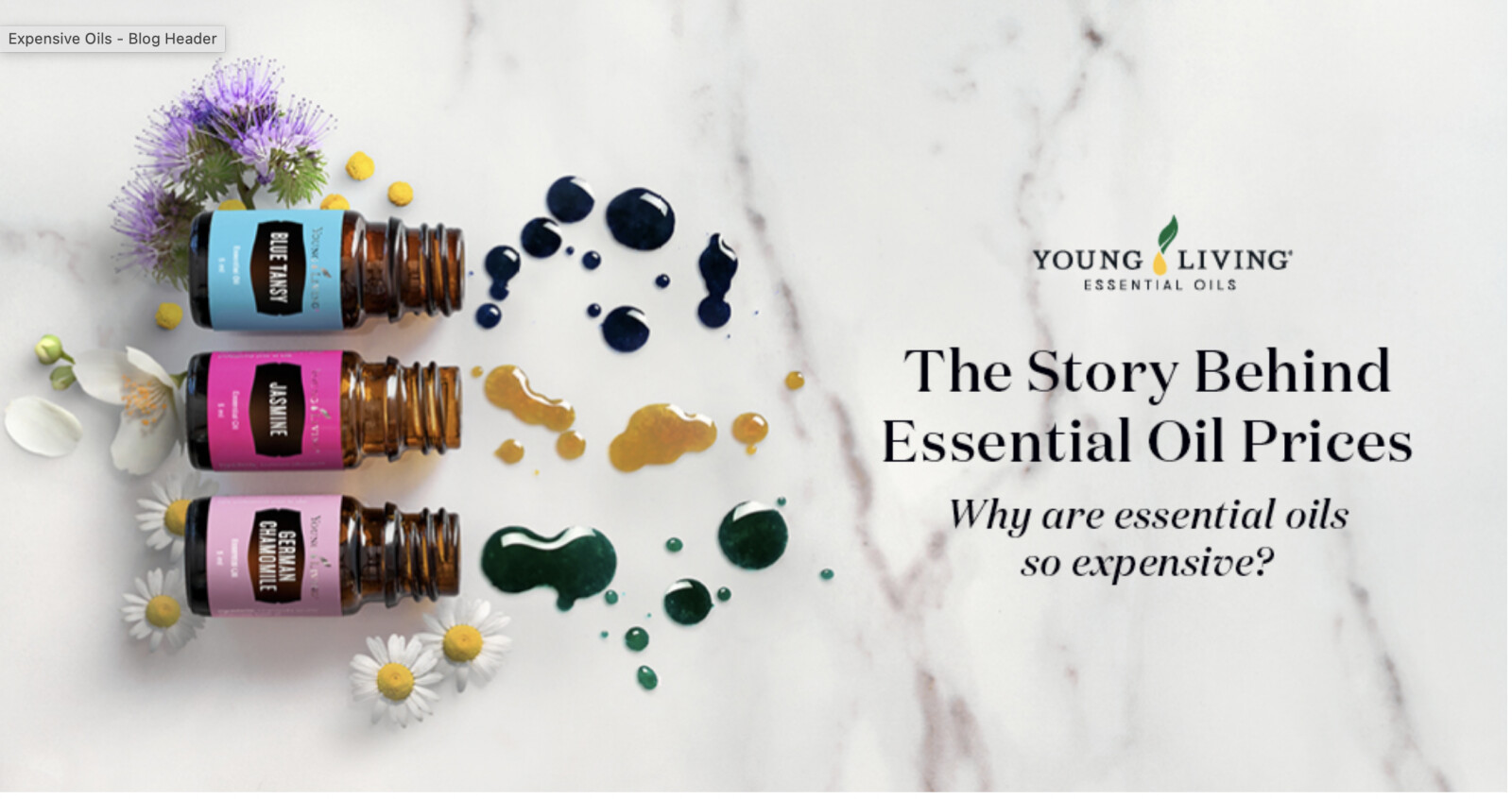
This is a reprint from the Offical Blog of Young Living Australia in its entirety! I thought the topic is also so relevant in the US, so I am sharing it in my blog as well! I was reminded of a saying I heard several years ago that says "It is expensive to be healthy, but it is even more expensive to be sick"! So when choosing an essential oil, remember that quality counts!
Here is the article
The Story Behind Essential Oil Prices: Why are Essential Oils Expensive?
Why are essential oils so expensive? It’s the question that probably pops into everyone’s mind, and you aren’t the first person to wonder why! Like most people, when you are looking into purchasing something for yourself or your home, you do the usual: you do a bit of research, you compare prices, look at the quality, find reviews or ask your friends.
You may have even seen much lower-priced essential oils in local shops and wonder how they compare to Young Living’s premium essential oils. Is the price difference really worth it when it comes to the quality of oils?
The answer is a definite YES. Let’s talk about why this is the case and what factors contribute to the cost of essential oils.
So why are some essential oils costly?
To understand why some essential oils are expensive, it’s important to know how essential oils are made. Essential oils are essentially (for lack of a better word!) plant extracts. They’re made by steaming distilling, resin tapping, or pressing various parts of a plant (flowers, bark, leaves, or fruit) to capture the compounds that produce fragrance or essence. It can take several kilos of a plant to produce a single bottle of essential oil.
The price of essential oils ranges widely. Many factors contribute to why some are more expensive than others. This can include the ease of harvesting the plant, the botanical amount needed to produce the oil, plant time sensitivity, purity of the oil, the rarity of the plant, shipping costs, and more.
How much of a plant does it take to produce an essential oil?
Some plants produce less oil than others when distilled, meaning larger amounts of the plant are needed to produce the same amount of oil. For example, our lovely Rose essential oil is very valuable due to the great effort it takes to cultivate the flowers and all the raw botanical material it takes to produce the final product. Fun fact! It takes 9.98 kilos of rose petals to make ONE 5ml bottle of Rose essential oil! For one 15ml Lemon essential oil, 75 lemons are required.
Harvesting the plant
All plants are unique in several ways, which means they need different amounts of care and attention. Certain botanicals can be extremely sensitive requiring them to be harvested at a specific time of day, month, season, or time of year to ensure we are yielding the best quality of the oil. Melissa essential oil is a great example of this. The distillation of Mellissa is a time-sensitive process that must take place at the right time of the day and a precise moment of blossoming to harness its full potential.
Did you know that the difference between an early morning harvest and an afternoon harvest can be critical enough to decrease oil production by up to 90%! This leaves a tiny window of opportunity to get a proper harvest. Due to the sensitivity of the plant, immediate action after harvest must be taken to ensure viability as any drying of the plant material can severely limit or even destroy the amount of oil obtained from the process.
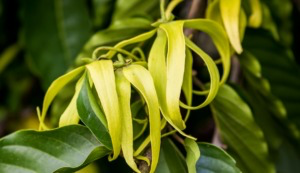
Rarity of the plant
Plants such as lavender and lemon are extremely common, while others are much scarcer. Blue Tansy is a rare, exotic plant that originates on the Mediterranean coast of Morocco. Perhaps Blue Tansy’s most unique feature, chamazulene is the naturally occurring constituent that provides the oil’s characteristically rich, deep-blue color, which appears only after steam distilling the tiny yellow flowers.
Shipping costs
The plants used to produce essential oils originate from different places due to having farms across the world. Shipping them from different countries such as Africa, France and Israel add transportation costs to the price of oil production. Helichrysum is native to coastal France, Italy, and Croatia. Its delicate flowers bloom in rocky soils before a painstakingly careful harvest. When you buy oils, it’s important to research where the botanicals were grown. Farming the plants in their natural environments or in habitats that replicate their native environments is crucial to producing the best-quality oil.
Why are other essential oils so cheap?
If you’ve browsed through different essential oil options offered online or in various other shops at your local shopping center, you’ve likely seen a wide range of prices. And prices that look way more appealing to the eye. Have you taken a look at the ingredients? Researched the company background? Know how they make their oils? Companies with lower-end pricing often use poor-quality oils and dilute them to achieve those cheaper price points.
When shopping for essential oils, double-check they don’t contain any synthetic fillers. Oils singles should only contain one ingredient – the oil itself. For oil blends, ensure that those ingredients are pure botanical oils. Of course, some high-quality blends may be diluted with a neutral carrier oil like jojoba or grapeseed, depending on the product’s intended application. For example, some of our blends, like those in our KidScents® and Animal Scents™ lines, are prediluted with natural oils and/or glycerin to make them safe for use around children and pets. However, as a rule of thumb, you’ll want to avoid additives and dilutions – especially the synthetic ones.
What makes Young Living different from other oil companies?
It can be summed up in one word. Quality. Companies – particularly those that have lower price points – often compromise on their sourcing, formulation, process, and other elements of production. Young Living focuses intensely on getting every element right, and you never have to second guess whether you are getting a high-quality product. We are proud to set the industry standard for quality with our strict Seed to Seal quality commitment. This commitment to naturally derived, plant-based products mean we oversee the making of our oils from start to finish. From the growing of the seeds to harvesting the plants, to obtaining their oils, to rigorously testing the final product. Any time you hold a bottle of Young Living’s powerful essential oils, you hold nature’s pure essence.
To see us in our Seed to Seal action, watch this video and view a day in the life at the Simiane la Rotonde Lavender Farm and Distillery.
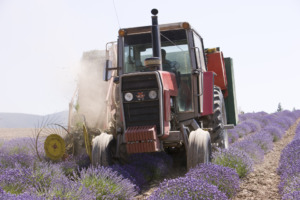
Our Seed to Seal promise ensure that our essential oils are made with the highest quality in mind. This takes out all the guesswork, allowing you to live naturally without a second thought giving you and your family a peace of mind.
While we absolutely love our dearer oils, we understand that especially when building your collection, dropping a lot of your budget on a handful of essential oils may be a bit much. That’s why we’re suggesting some of our favorite, most versatile oils that you can add to your collection for under $30 each!
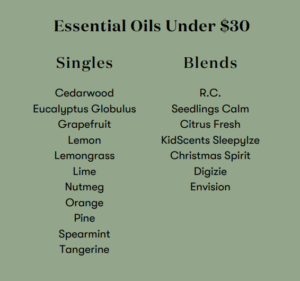
Check out our farms where our essential oils are grown. Learn more about how and why to focus on the quality of essential oils here. Are you curious about how to use essential oils? A good place to start is our beginner’s guide to essential oils.




